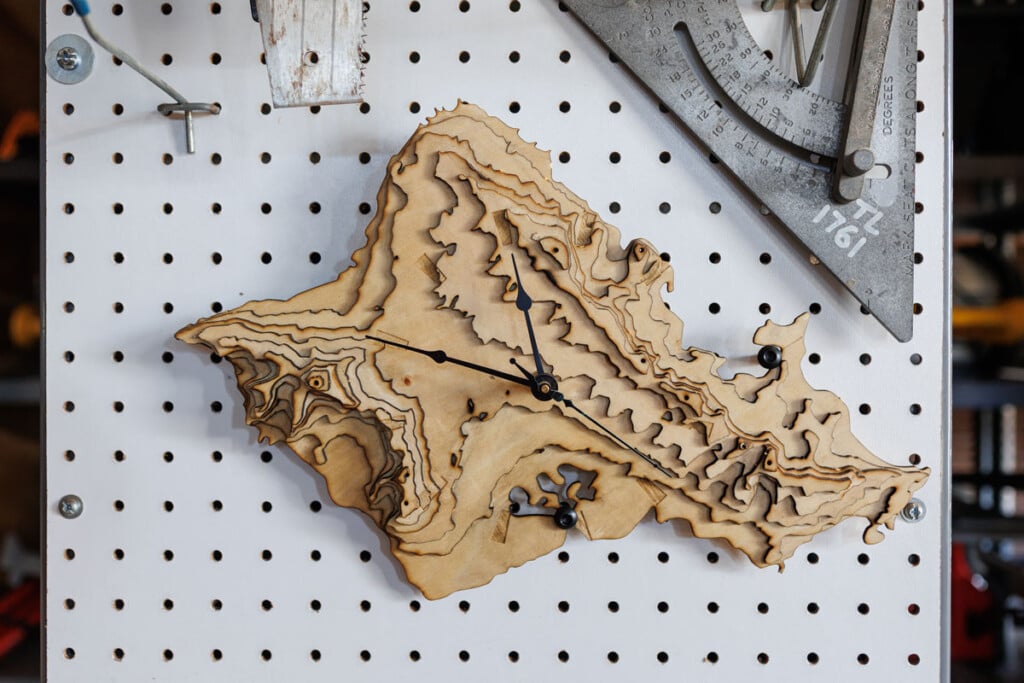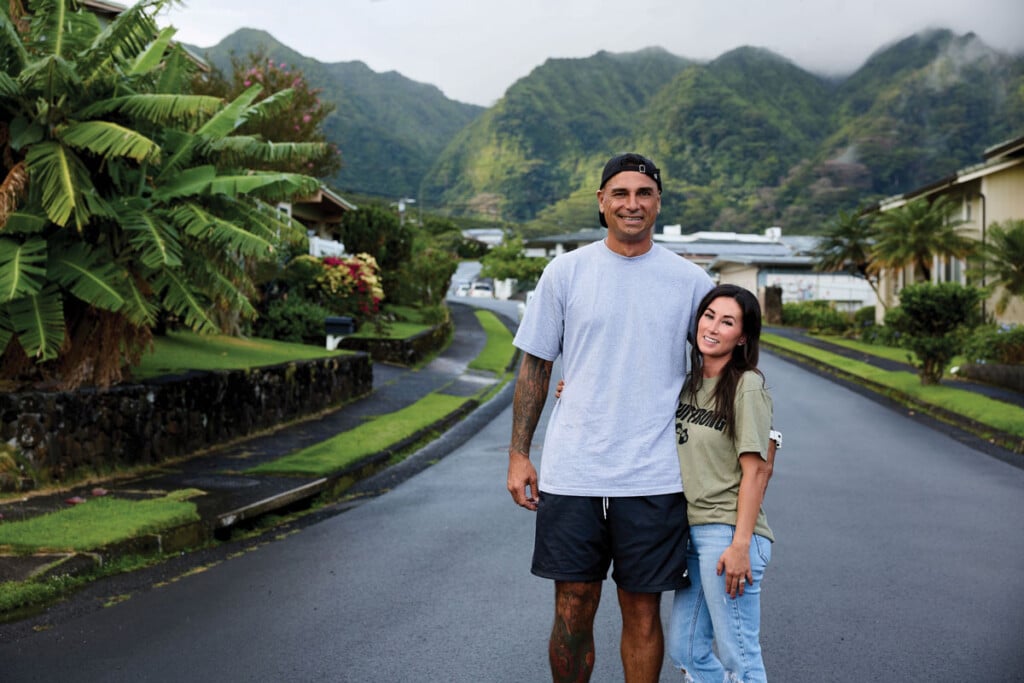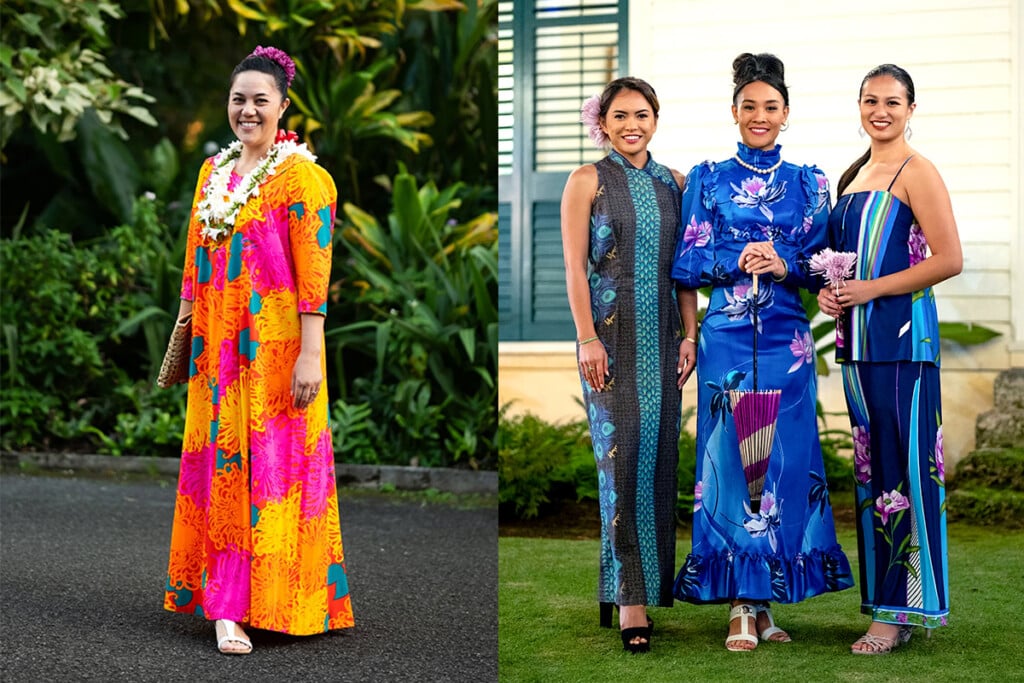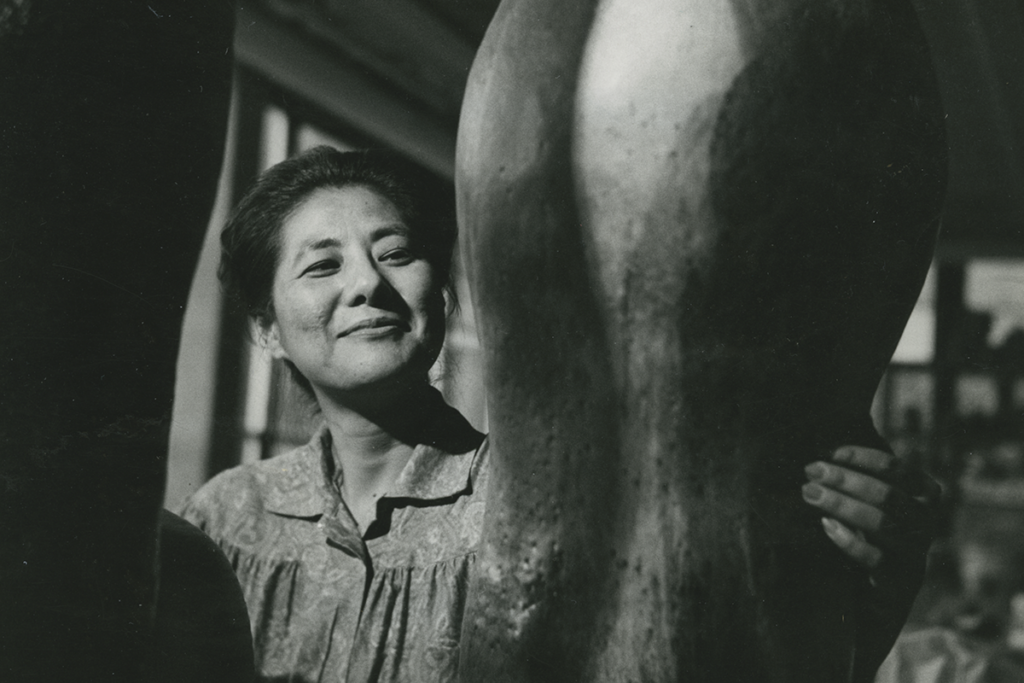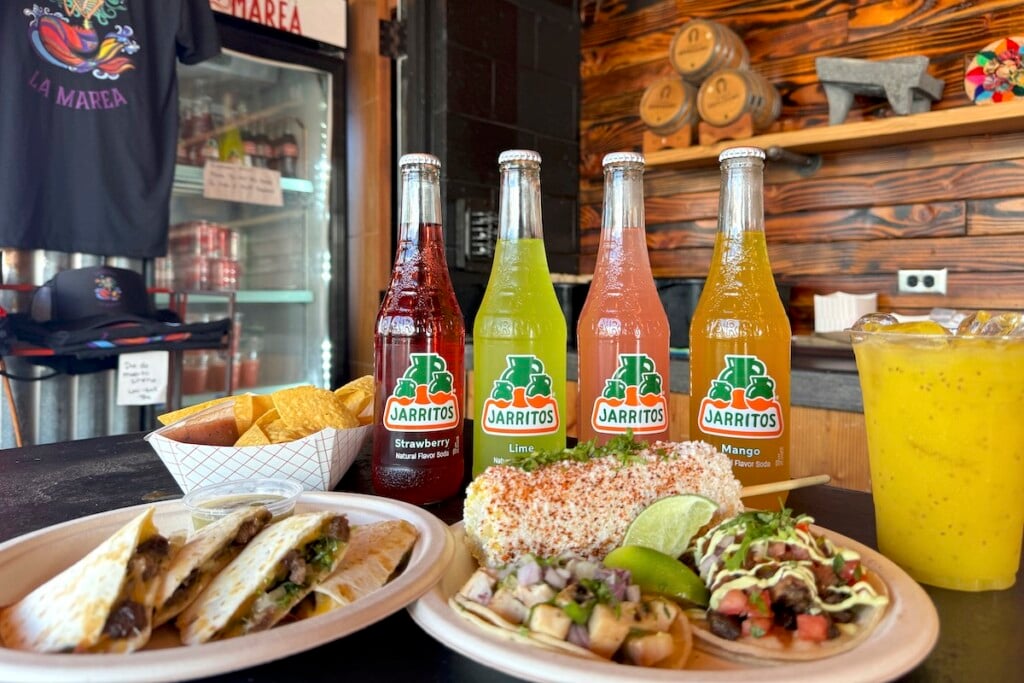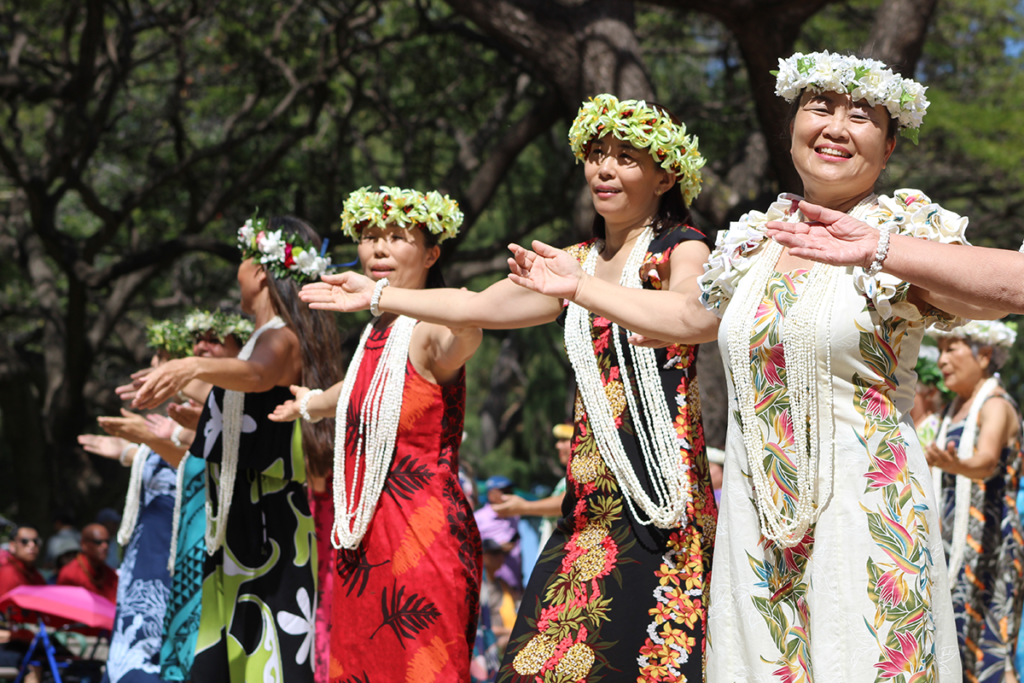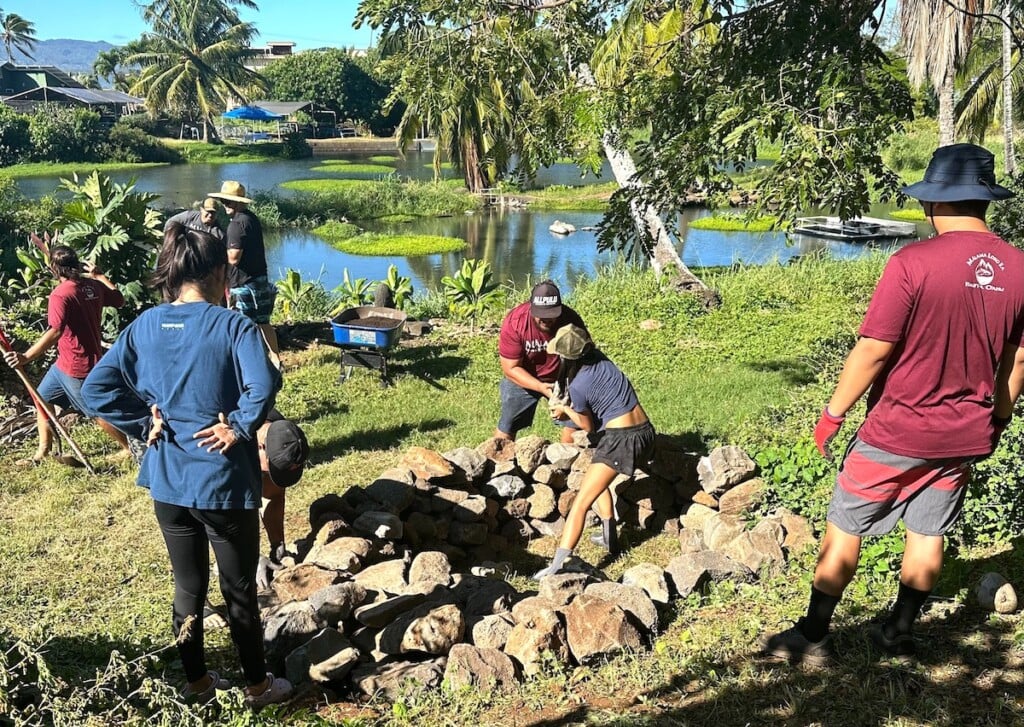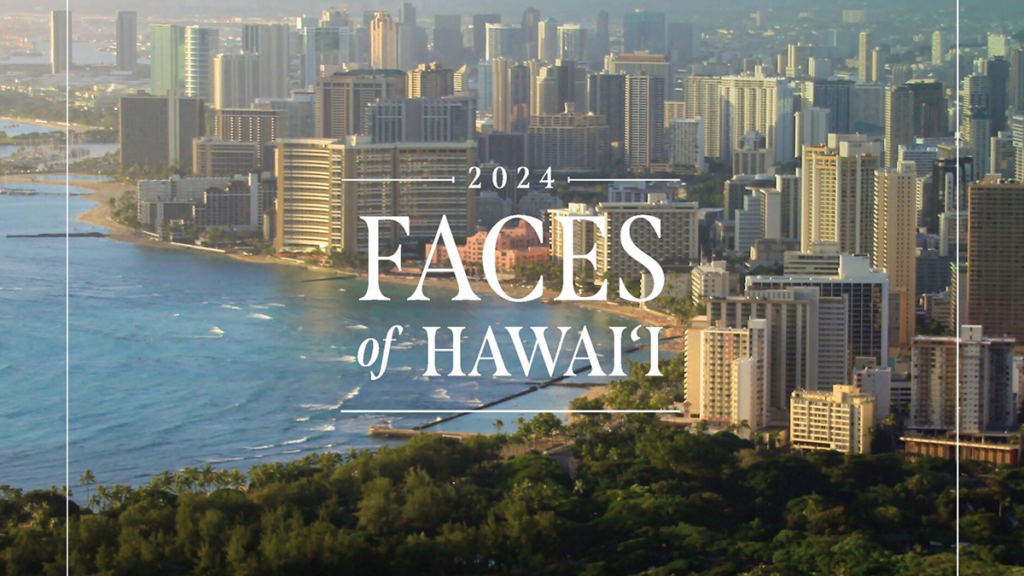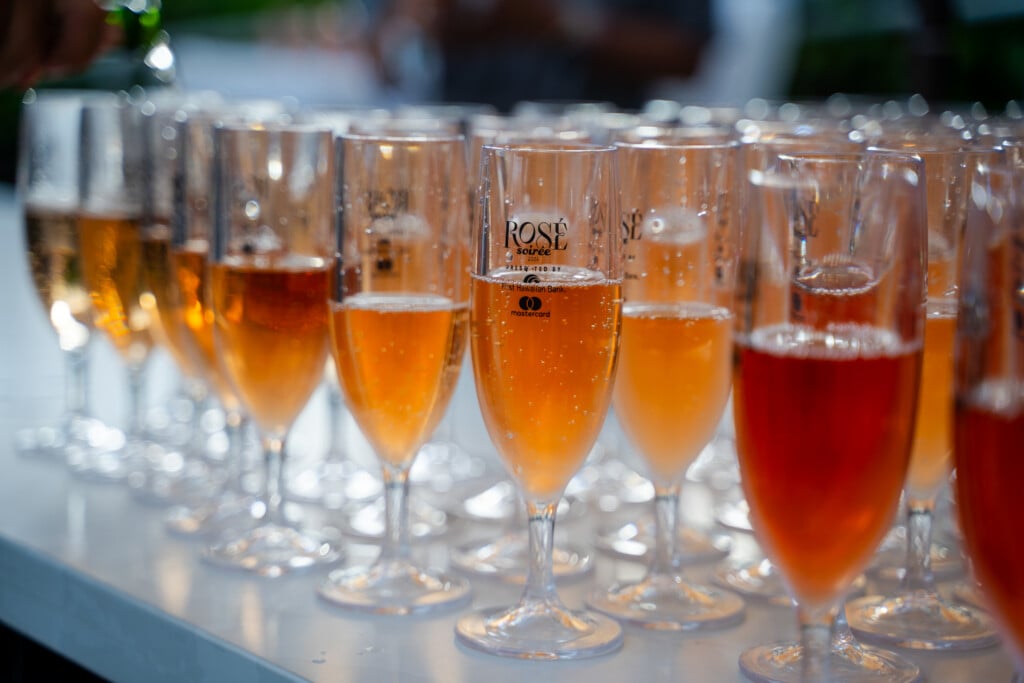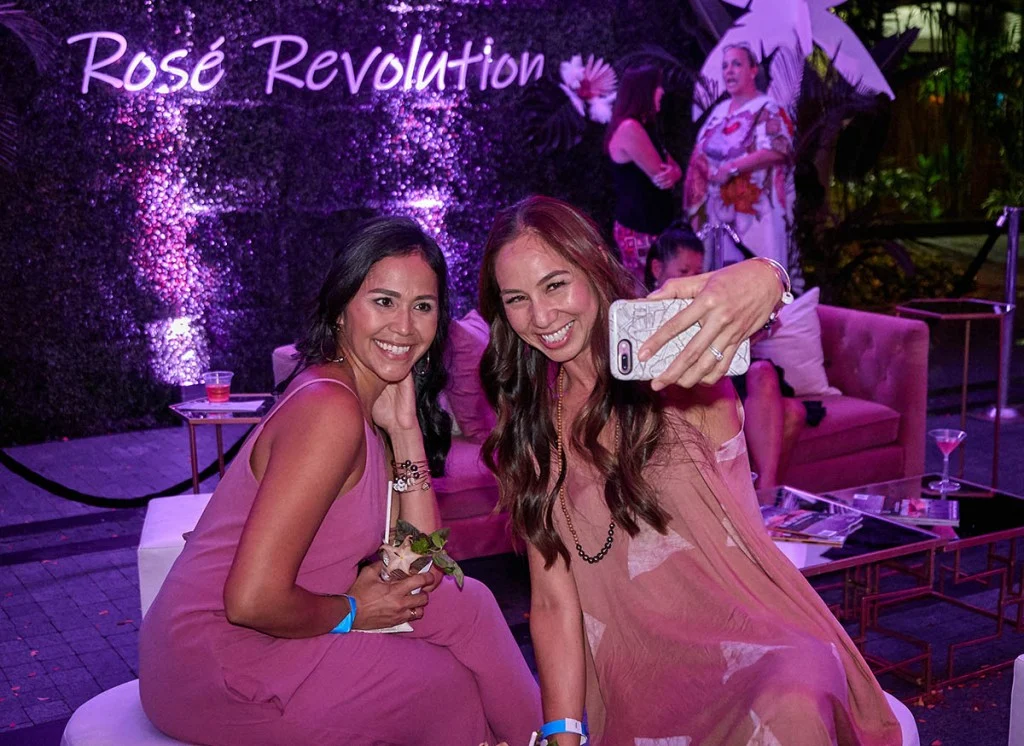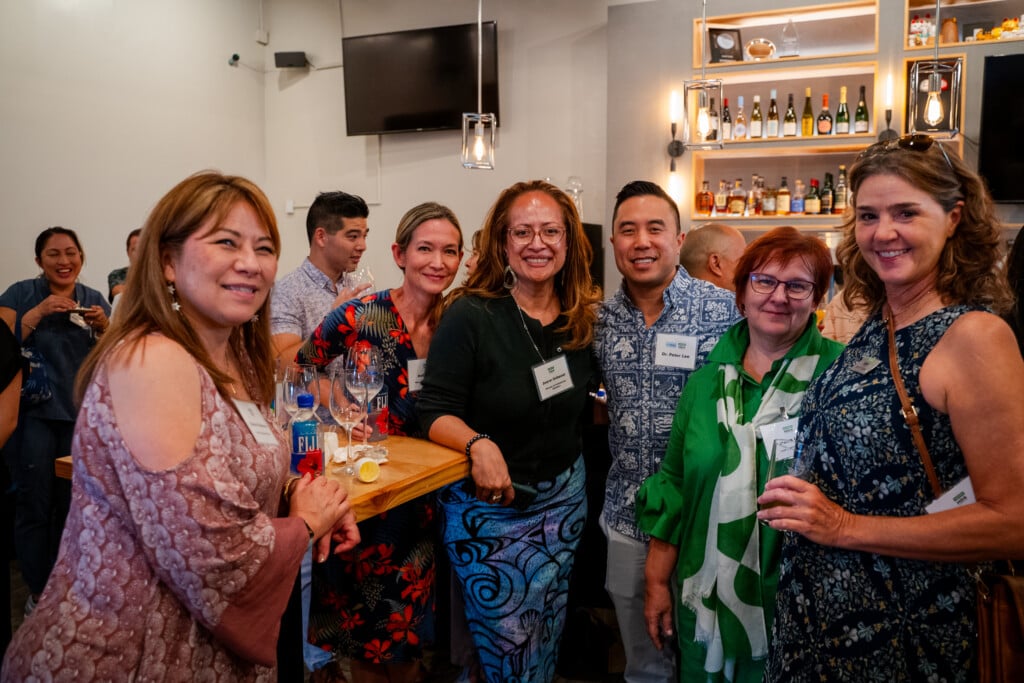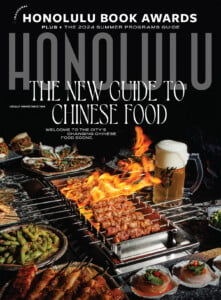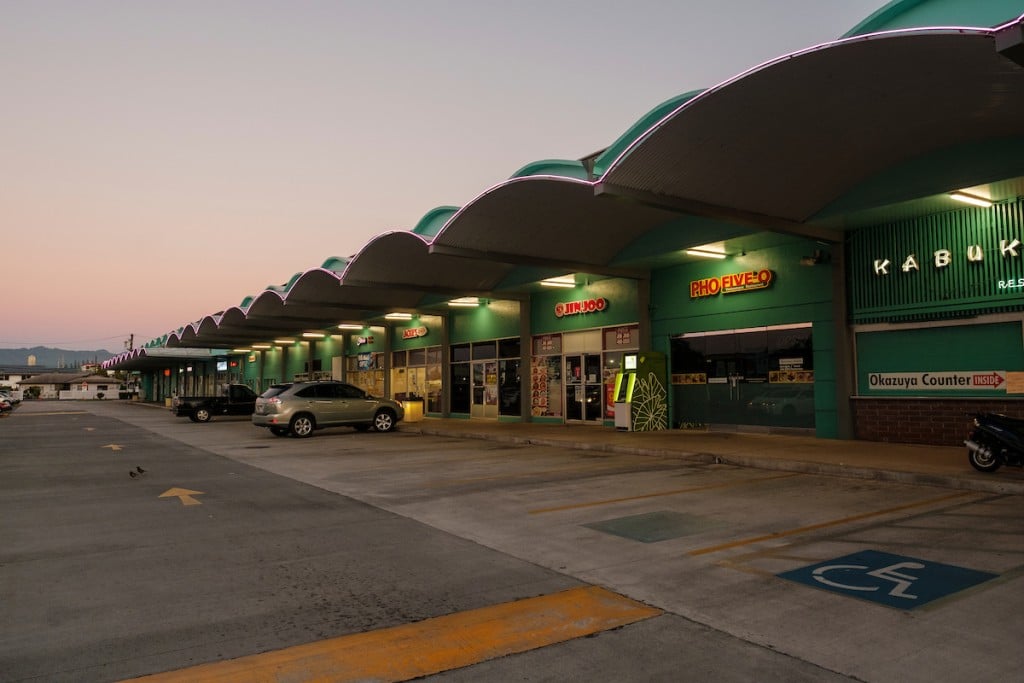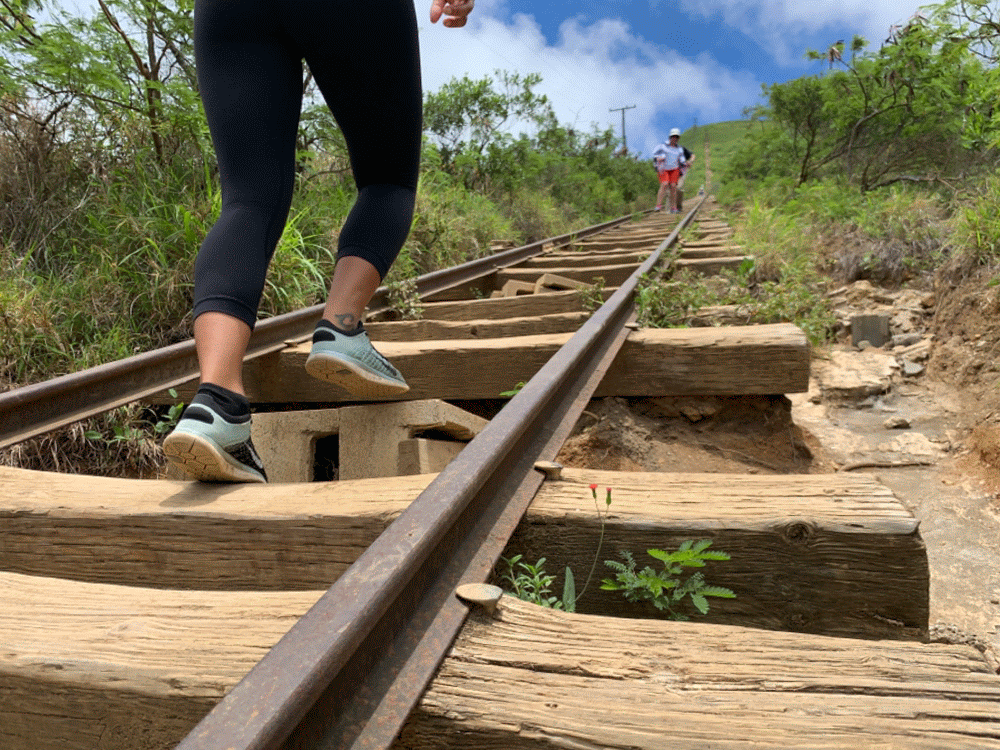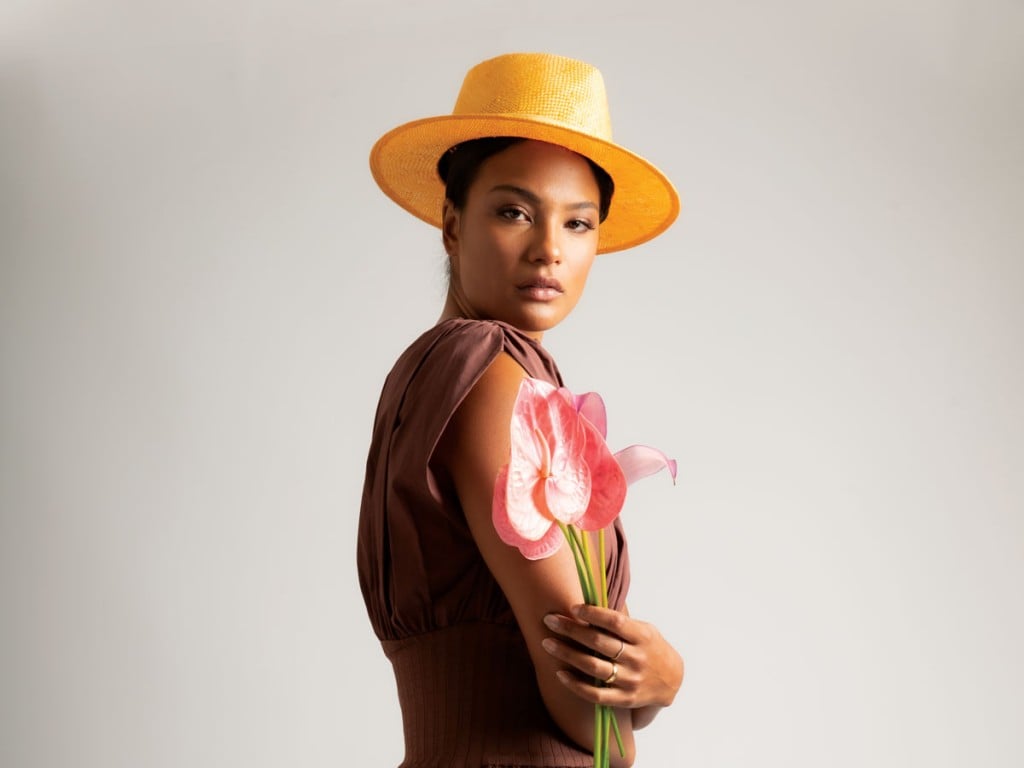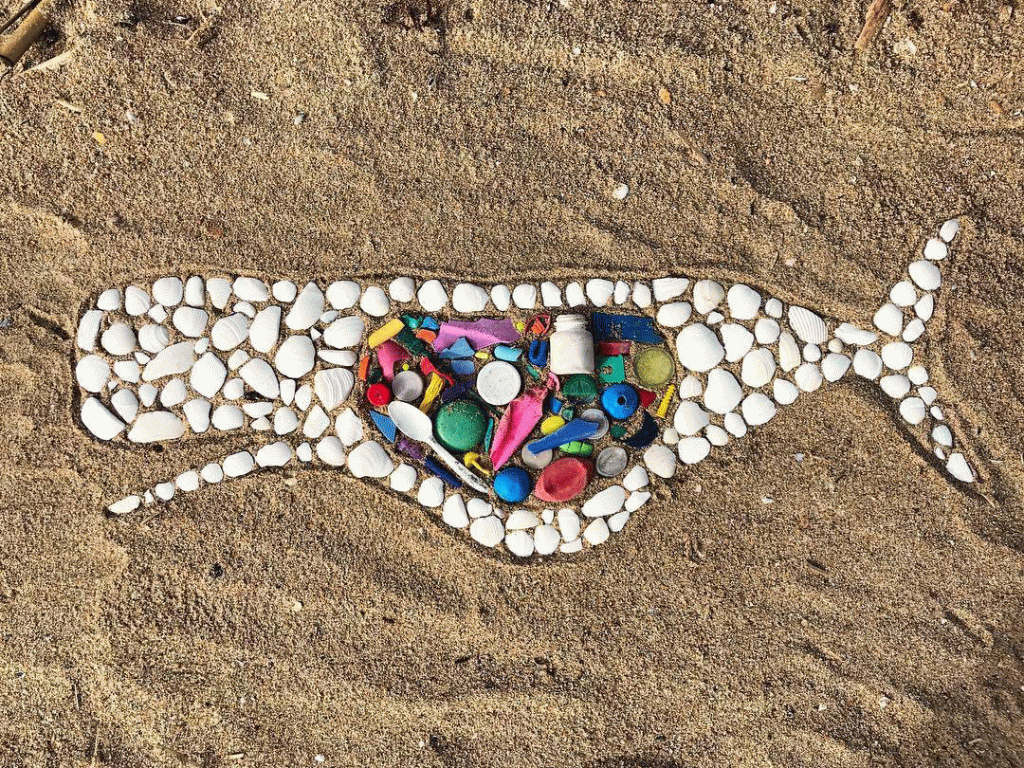Will These 4 Hawaiian Traditions Disappear Forever? Meet the Teachers Who Are Fighting to Keep Them Alive
While hula and lei making thrive, other ancient Hawaiian traditions are disappearing. Some survive only through the work of a few passionate teachers. The Office of Hawaiian Affairs hopes to bolster these cultural practices with a soon-to-be-released directory of artists, instructors and experts. Meet four of those practitioners who are fighting to keep their ancient arts alive.

Mahi La Pierre has spent nearly two decades trying to revive the ‘ūkēkē, Hawai‘i’s only indigenous string instrument. Photo: Leah Friel
Mahi La Pierre couldn’t stop crying. He and his two friends had scraped up just enough money to fly to Hilo for the Merrie Monarch Festival in April. They had convinced one of their co-workers to let them stay at her house in Volcano. And they snagged those golden tickets. It was all to watch No. 28—kumu hula Kaleo Trinidad’s hālau.
Trinidad was slated for the second to last spot of kahiko (ancient style) night. As it neared midnight, the hālau’s 30 kāne walked onto the stage, each holding a long, narrow strip of dark brown wood with three strings tied to the end. With one swift motion, they lifted it to their mouths and began strumming with their thumbs. It was a sound unlike any other to resonate through that hallowed stadium—an intriguing, mysteriously crisp medium-toned pitch, almost like a chanter’s voice. It was a moment La Pierre will never forget.
Many in the audience didn’t seem to know what those pieces of wood were. But for La Pierre, the wood represented more than a decade of his life—a decade of trying to spread the word about the ‘ūkēkē, Hawai‘i’s only indigenous string instrument. It was a long time coming.
SEE ALSO: My Honolulu: Trying (and Failing at) Hawaiian Sledding
“We were crying like babies. We were so happy,” he remembers. “It was just so surreal and beautiful. That’s all we ever wanted, was to perpetuate it.”
Although La Pierre, 53, has taught hundreds of people, including Trinidad’s students, about the ‘ūkēkē, he’s still only one of a few who regularly practice and teach it. He is among a diverse group of practitioners trying to revive some of ancient Hawai‘i’s cultural traditions, many of which were wiped out after the missionaries arrived. They hope their passion and dedication will ignite a change.
Journey to the Past
It started with a trip to a shipping container. After joining a lua (Hawaiian martial arts) group in 1997, La Pierre’s teachers took them to a house in Nānākuli where they found dozens of wood scraps. Their task was simple: Choose a piece and make a weapon.
As La Pierre scanned the pile, an old cracked board riddled with bug holes caught his attention. His teachers told him it was from the rare uhiūhi—there were only three such trees left on O‘ahu. It took him some time to figure out what to make, but he eventually carved a dagger out of the scrap. He liked working with the indigenous wood so much that he decided then to immerse himself in all things uhiūhi, eventually tattooing an image of the tree on his body. And what he learned during his immersion changed everything: Uhiūhi was used to make ‘ūkēkē.
But La Pierre couldn’t track down much information on the ‘ūkēkē. He couldn’t find anyone who was actively teaching or making it either. He had a feeling that the practice had simply disappeared.

Tom “Pōhaku” Stone says the fastest rider alive today clocked more than 80 mph. Photo: Leah Friel
Tom “Pōhaku” Stone knows that feeling.
As a kid, Stone remembers his grandpa telling stories about how he used to slide down hills on a sled. Years later just before starting college, Stone realized his grandpa was talking about he‘e hōlua (Hawaiian sledding).
It took Stone, 68, decades to find his way back to his cultural roots. In the 1990s, he was in his 40s and decided it was time to enroll in college. He took a beginning Hawaiian studies class at Windward Community College where he was tasked with writing a cultural report. While most of his classmates opted to focus on voyaging, he recalled those childhood stories.
But like La Pierre’s search for the ‘ūkēkē, Stone found very little information about he‘e hōlua. With help from his then-girlfriend and now-wife, Anne Campbell Stone, who was a librarian in UH’s Hawaiian and Pacific collections, he scoured the books and catalogs in search of any mention of he‘e hōlua. During that time, he learned that it was first used to transport big logs from the mountain to the ocean for canoe making, then eventually turned into an extreme sport and form of religious worship.
SEE ALSO: How Hawaiian Immersion Programs Are Inspiring Public School Students
But after years of research, he’s still identified just 11 references in Western literature, and all of the kahua hōlua (slides)—the longest he found spanned nearly 3,000 feet on the Big Island—had been dismantled.
Stone, an avid surfer and former lifeguard, set out to change that. Drawing on a painting at McCoy Pavilion he remembers seeing as a kid, he managed to lash together his first sled, called a papa hōlua, out of kauila wood and coconut fiber in 1993. It took him six months to figure it out.
“I had dedicated everything and made a commitment,” he says. “It’s so much a part of my culture and history. I didn’t realize how important it was until years later. It is my destiny.”

IT TYPICALLY TAKES MAHI LA PIERRE A FEW HOURS TO CUT AND STRING TOGETHER AN ‘ŪKĒKĒ. THE HARDEST PART IS SANDING DOWN THE 17- TO 24-INCH WOOD PLANK. Video: Leah Friel
‘Ūkēkē artist La Pierre faced a similar journey. In 2002, he made his first string instrument out of ‘iliahi (sandalwood), after finding some references in books and poking around Bishop Museum for help. He didn’t know what he was doing.
He kept working until his big break came six years later. He connected with renowned chanter and composer Ka‘upena Wong, who taught him his first ‘ūkēkē song. It was a romantic one, taught to Wong by Mary Kawena Pukui, that told lovers they’re as fragrant as the laua‘e (fern) and as beautiful as hala flowers.
SEE ALSO: Q&A: Kumu Earl Kawa‘a Teaches More Than Just Woodworking Classes

Photo: Leah Friel
Learning to play the ‘ūkēkē wasn’t easy. Players strum while moving their mouths. The instrument was used for romance and courtship as both the volume and words encourage closeness. The dulcet sounds beckon lovers to come closer. You don’t actually speak the words but instead allow the mouth to act as a resonance chamber, creating echoes of different vibrations for each syllable. Sometimes lovers would try to guess what their partners were trying to say by watching the movement of their mouths.
“Imagine that some of us are here today because of the ‘ūkēkē,” La Pierre says. “It was once not so honored and treasured, and now we have a chance to change that.”
Planting Roots
For some cultural practitioners, rediscovering their roots was the easy part. Spreading the word and getting others to join them was more difficult.
Stone had no problem finding people, particularly youngsters, to board a papa hōlua. But he needed ones who wanted more than a quick thrill ride. They would be the ones to pass this on.
In the early days, he taught his three sons, daughter and grandson. He trained 15 people with help from a state grant in the hopes that they would carry on the tradition. He taught a course at Kapi‘olani Community College. He still takes school groups to Turtle Bay, where he built a slide seven years ago, and during his free time, he offers lessons on how to make a papa hōlua from his workshop in the garage of his Kāne‘ohe home.
Still, his efforts haven’t yielded many active practitioners and teachers. Some students didn’t understand the backbreaking dedication involved. It takes 27 to 30 hours straight to make a 12-foot-long sled. His hands bleed from cuts as he pulls and lashes the fibers, often working with 200 feet of line at a time. If the fibers aren’t pulled tight enough, the sled could fall apart during a ride.

Video: Leah Friel
And then there’s the courage needed to take the plunge. Papa hōlua move fast—Stone says the fastest recorded rider alive today clocked more than 80 mph. Accidents are inevitable—he’s been rushed to the hospital six times after crashing. The most memorable was in 2001 in Kohala while filming for National Geographic.
Stone describes how he’d made it a quarter of the way down a steep 2,000-foot hill when he launched into the air and the sled touched down, then stopped. His face slammed into it, and the wood sliced him from cheek to chin. If he hadn’t been wearing sunglasses, he might have lost an eye. His friends rushed him to the hospital while he sat in the back seat unfazed, “drinking my beer with a straw.” Luckily, a surgeon was able to stitch him up, but to this day, nerve damage leaves him with tingling in his cheek.
“I never really had a thought or feeling about it,” he says about the dangers of riding. “Once I go, I’m committed 100%.”
In July, Stone hosted workshops at Bishop Museum, attracting hundreds of visitors and locals, including a group of 11 preschoolers, to talk story and slide down the 25-foot makeshift rock slide he built on the lawn. Many were surprised to know that there was such a thing as Hawaiian sledding and even more shocked to learn that there was once a slide that ran from the very top of Kamehameha Schools through the museum property.
Stone is a patient and friendly teacher. He greeted every person, taking time to explain the history of he‘e hōlua. He led each visitor to the sled, instructing them how to lie on it correctly, stopping to bend down and adjust their hands and feet. Some of the kids seemed a little timid once they saw the slope, but he quelled their nerves. Soon, with a little push, the kids were off, laughing (and screaming) on their way down. It’s opportunities like these that he looks forward to most.
For La Pierre, the quest to revive the ‘ūkēkē had a slow start. It got a big boost, though, when he secured a grant from the Hawai‘i State Foundation on Culture and the Arts to travel to the Neighbor Islands and Washington, D.C. He remembers walking through a “pretty tough neighborhood” in D.C., his ‘ūkēkē sticking out of his pocket, when a “big guy” approached, asking if it was a weapon. La Pierre whipped out the instrument and played it, to the other man’s surprise.
Then he got a call last year—Kumu Trinidad wanted to use the ‘ūkēkē in his Merrie Monarch performance. Not only would it be showcased to locals, but it would also reach an international audience through the festival’s popular television broadcast. La Pierre and his fellow players were elated.
SEE ALSO: Quote Unquote: What It’s Really Like Organizing the Merrie Monarch Festival

MEMBERS OF THE LUA GROUP PĀ KU‘I-A-HOLO TRAIN WEEKLY TO MASTER THE SKILLS OF ANCIENT HAWAIIAN WARRIORS. Photo: Leah Friel
He didn’t quite know what to expect. They started in December, first showing the hālau how to make ‘ūkēkē and then teaching them the song he learned from Wong. With every meeting, they could see the students’ progress and how invested the hālau was in this lost art. It was so inspiring that La Pierre and his friends decided they couldn’t miss the chance to see it live in Hilo.
“This is not the most glamorous thing in the world,” he says. “But if I can help in any small way or to help someone else be inspired to learn more … that’s really exciting and rewarding.”
Leaving a Legacy
What excites Maile Loo-Ching is to see the hula of her ancestors and teachers come alive again. As executive director of the Hula Preservation Society, she’s spent years spreading the word about hula ki‘i, an ancient style of hula that uses puppets and imagery. Dancers use finger, hand or full-size puppets, each with its own mana and presence. Another form of hula ki‘i involves dancers taking on the form of characters and figures from stories, mimicking their motions and expressions.
In 2017, Loo-Ching, along with three kumu known for hula ki‘i—Mauli Ola Cook, Kapono‘ai Molitau and Auli‘i Mitchell—embarked on a two-year statewide project to raise awareness and teach other kumu, whom they hoped would continue the legacy. They traveled to every major Hawaiian island. Hundreds of people, including many who weren’t familiar with hula ki‘i, attended the presentations and workshops.

Mauli Ola Cook dances with a ki‘i made by the late kumu hula John Keola Lake during a workshop on the Big Island. Photo: Courtesy of Hula Preservation Society, Mike Frailey
“Giving more life” to hula ki‘i was “one of the highlights of my life,” says Cook, 70.
Once a treasured way of storytelling, ki‘i had a special role and were used in different ways—a puppet-show format with chanting accompanied by implements, and as puppets accompanying a dancer. When Cook dances with ki‘i, which were typically made of wood, kapa, shells and seeds, she says it can be difficult to make a doll come to life. The other form of hula ki‘i can be equally challenging—dancers take on the posture and mannerisms of characters and figures in a story and become the images themselves.
But Loo-Ching believes the ki‘i were later associated with symbols and idols banned during the kapu system. Then when the missionaries arrived, hula itself went through a lot of changes and some of that knowledge was lost. Now with hundreds of people attending their presentations, the real test will be if more kumu hula and others begin teaching it.
“We’ve planted seeds, but how do we help them grow?” she questions. “For it to live on, there has to be more practitioners. It’s a long-term thing.”

Video: Katie Kenny
Mitchell Eli knows all too well what it means to be dedicated long term. When Eli and his friend, Jerry Walker, approached revered lua master Charles Kenn about 50 years ago, he declined to teach them lua, the secret art of the most skilled warriors. But after their persistent efforts and many late-night talks, Kenn finally agreed and graduated five ‘olohe (masters) four years later. Eli and Walker were part of that group.
Over 20 years of teaching lua to more than 2,000 students, Eli has graduated just five ‘olohe himself. It’s an elite art. He’s had to turn away nearly half of those who ask to learn because they don’t meet the requirements. Practitioners must trace their genealogy to Hawaiian chiefs (lua was reserved for the nobles). Mastery requires at least 10 years of training, including constant testing of students’ teaching and oratory skills, courage and their ability to follow the rules.
Just to join the group, Pā Ku‘i-A-Holo, students must complete a rigorous 48-hour course followed by a one-year probation to ensure they’re of good character. Eli, a retired chiropractor, says he might start with 10 students and be down to only two by the end of the year.
But at 78, he recognizes he can’t do this forever. So, he’s formed a select group of students whom he foresees will graduate as ‘ōlohe. They meet weekly at Kamehameha Schools’ Kekūhaupi‘o gym (named after the king’s lua trainer) and practice advanced hand-to-hand combat.

Video: Katie Kenny
On a late Thursday night, the group of 10 men and one woman start class with a haka, meant to create a sacred space. They line up single file, chanting and fiercely plunging forward and back, beads of sweat dripping down their faces, the embodiment of the powerful and aggressive warrior spirit.
This select class learns how to inflict critical injuries and other moves used by ancient lua warriors to disable or kill enemies in 20 seconds. Tonight, they’re reviewing how to break necks in a few swift movements. They practice in pairs. Two older men fumble, both toppling over on their backs and cracking up, breaking the intense atmosphere. Eli points to them and says with a smile, “There should be laughter. It’s an important part of learning.”
What was once practiced in secrecy is now being taught to dozens of Hawaiians, thanks to Kenn and others who paved the way for Eli and his fellow ‘ōlohe. For Eli, lua will always have a limited reach because of its genealogy requirements. But that doesn’t mean it can’t live on.
“Charles Kenn always told us, keep the core. Keep the tradition,” he says. “It’s a promise to my teacher. It’s a legacy for him that I can leave it to the next generation.”
A New Generation
Is there a rising generation of cultural practitioners?
The Office of Hawaiian Affairs hopes so. The agency plans to release updated cultural directories by the end of the year. The goal is to identify experts so the public can learn to perpetuate their traditions. Listings will note self-identified practitioners in searchable categories on OHA’s online Papakilo Database. The last directory published in the 1990s was uploaded as PDFs online. Since then, OHA has seen an uptick in the number of practitioners in some fields, including a huge increase from 20 to 300 fiber artists.
That seems promising. But it may not be the case for all cultural arts.

Photo: Courtesy of Hula Preservation Society, Ashtin Hart
Loo-Ching and Eli believe hula ki‘i and lua have gained popularity through their efforts but the work is never done. Loo-Ching hopes a grant she’s applying for will help fund more workshops on O‘ahu. Eli, who co-wrote a book in 2005 on lua with the four other ‘ōlohe who graduated under Kenn, is working on getting it reprinted.
La Pierre, who held workshops in November at Bishop Museum, and his friends dream of releasing an ‘ūkēkē album one day, with a huge concert at Hawai‘i Theatre. They started writing their own songs and hope to work with other artists and hālau.
“It’s an ecosystem. We’re trying to keep all of the pieces of culture and honor them,” he says. “We’ve lost too many things. Hopefully this won’t be one of them if we keep trying.”
